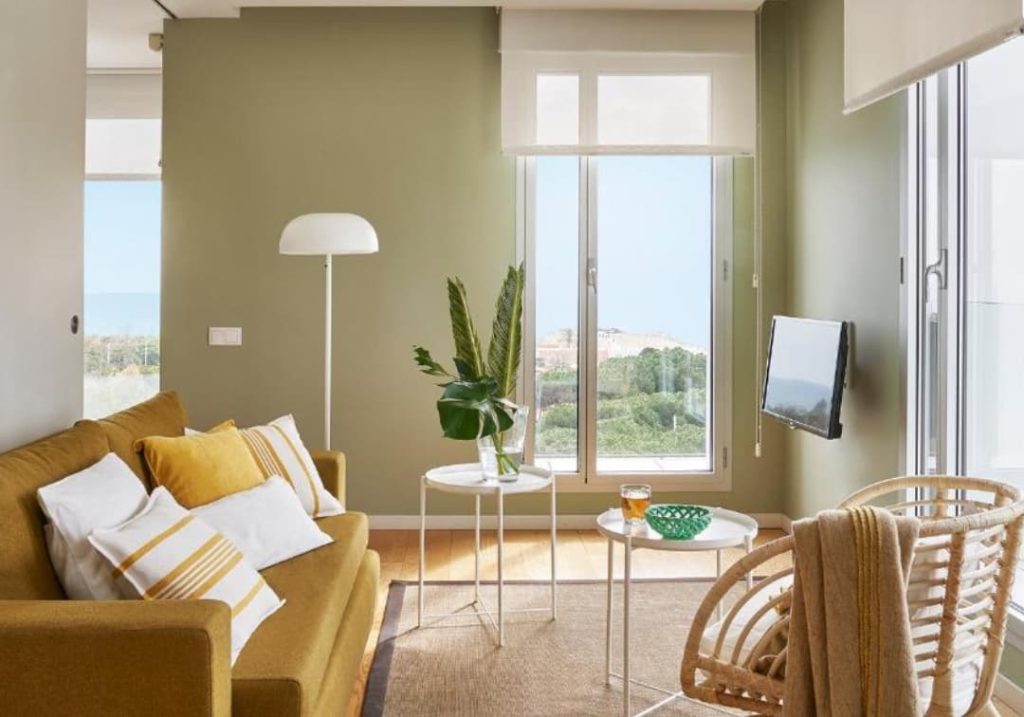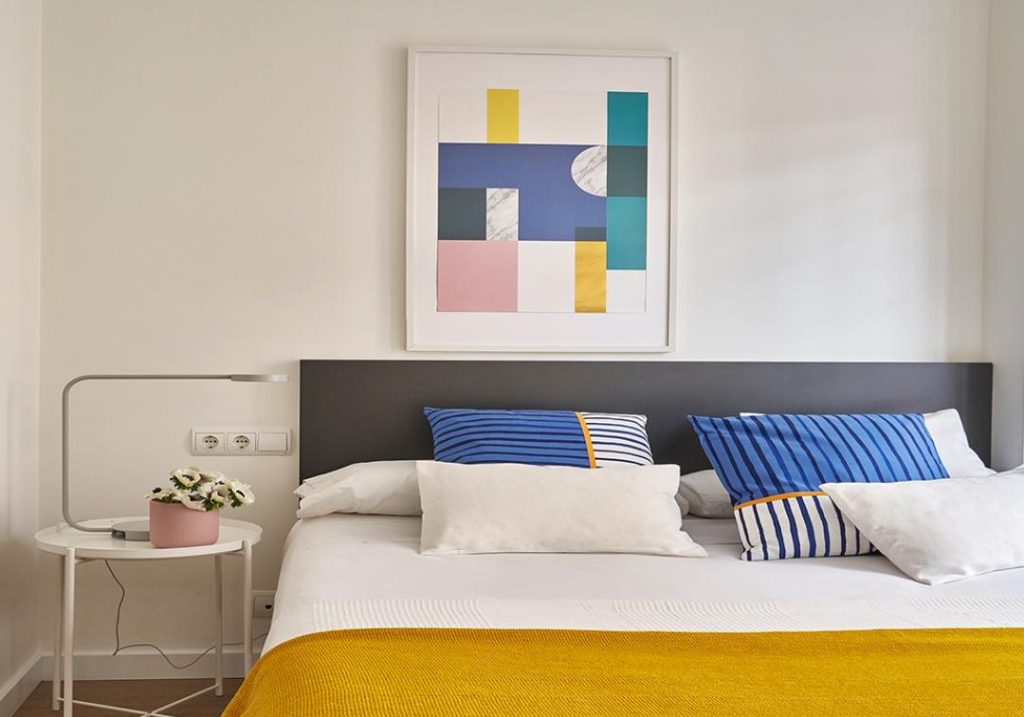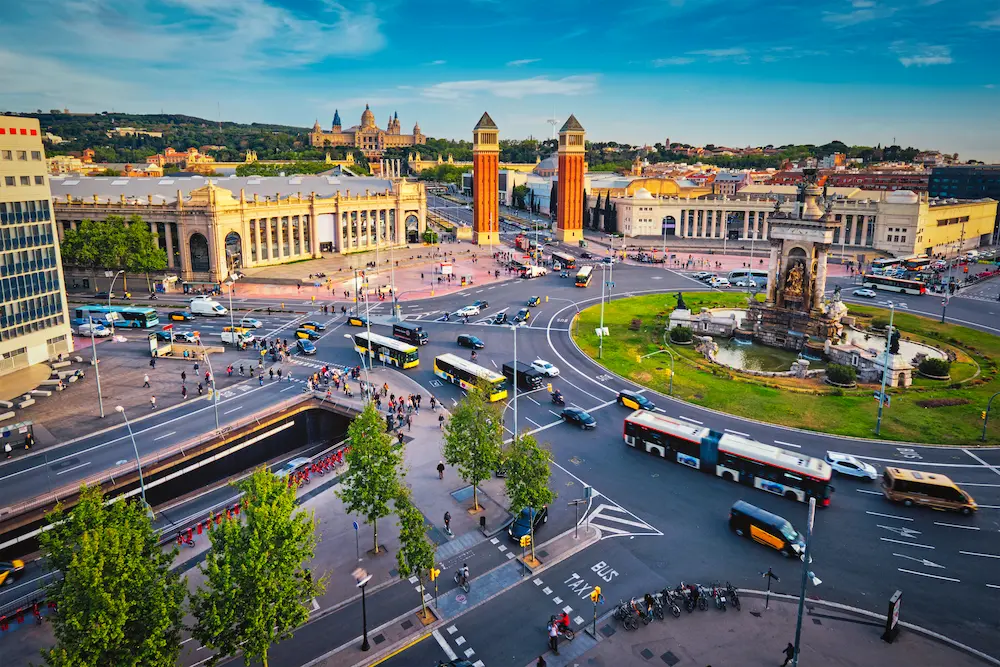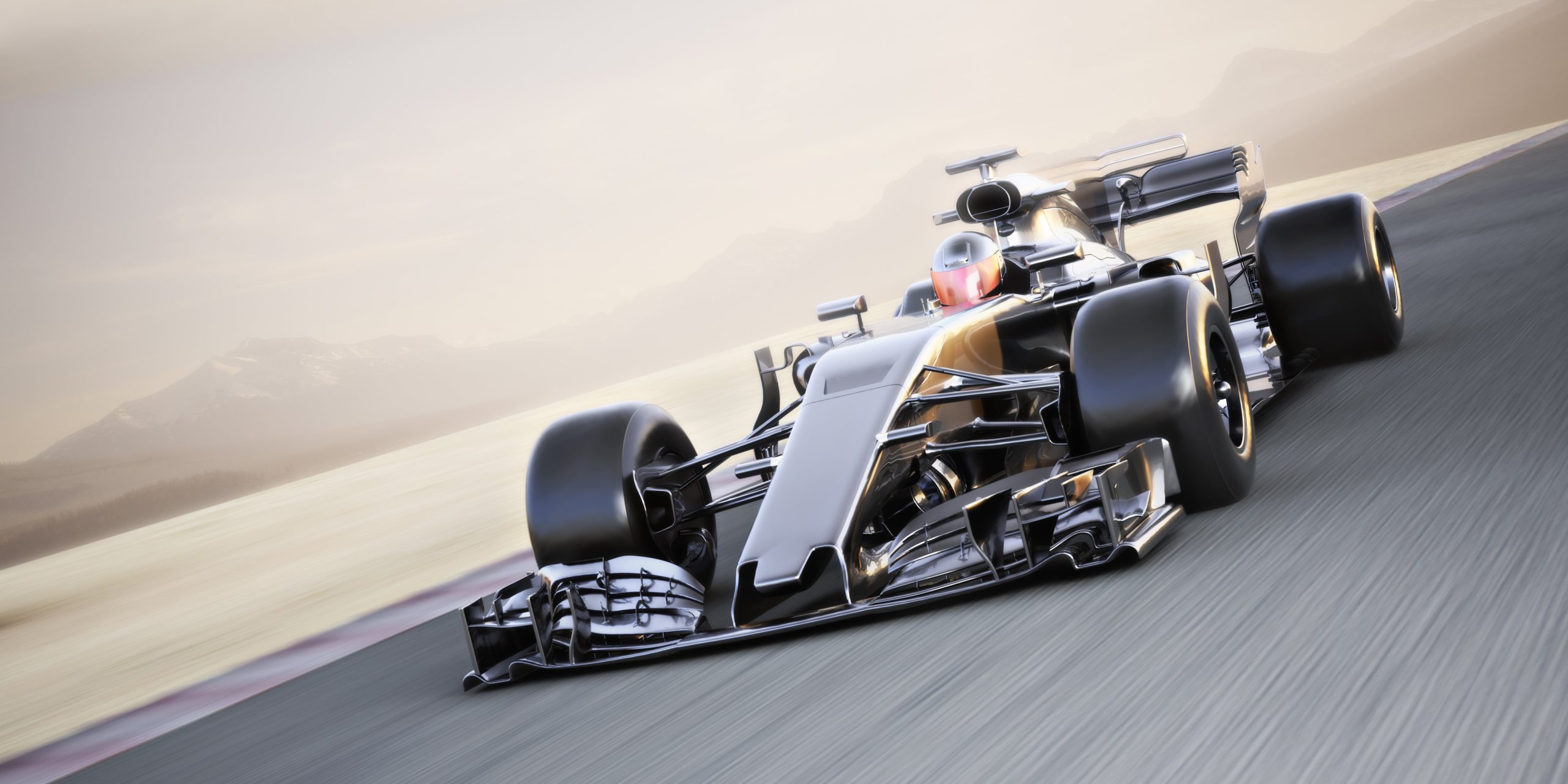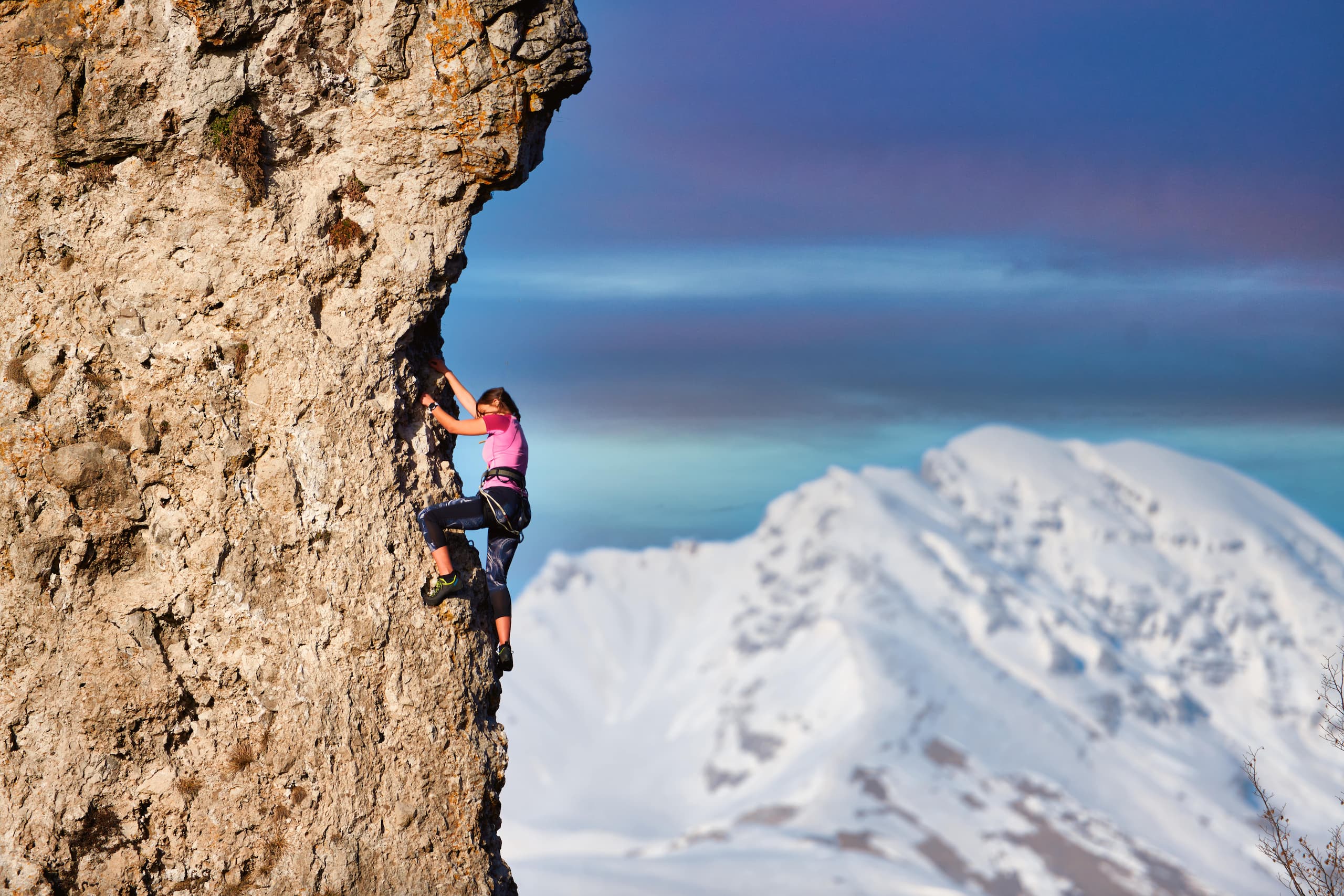Not more than 31 miles (50 km) away from Barcelona stands one of the most visited enclaves of Catalonia outside the Catalan capital: Montserrat. This mountain range attracts both nature lovers and curious devotees from around the world due to both the uniqueness of its location and the mystery that surrounds it. If you want to go on a day trip to Montserrat during your stay in the city, we explain everything you need to know to visit Montserrat in Barcelona:
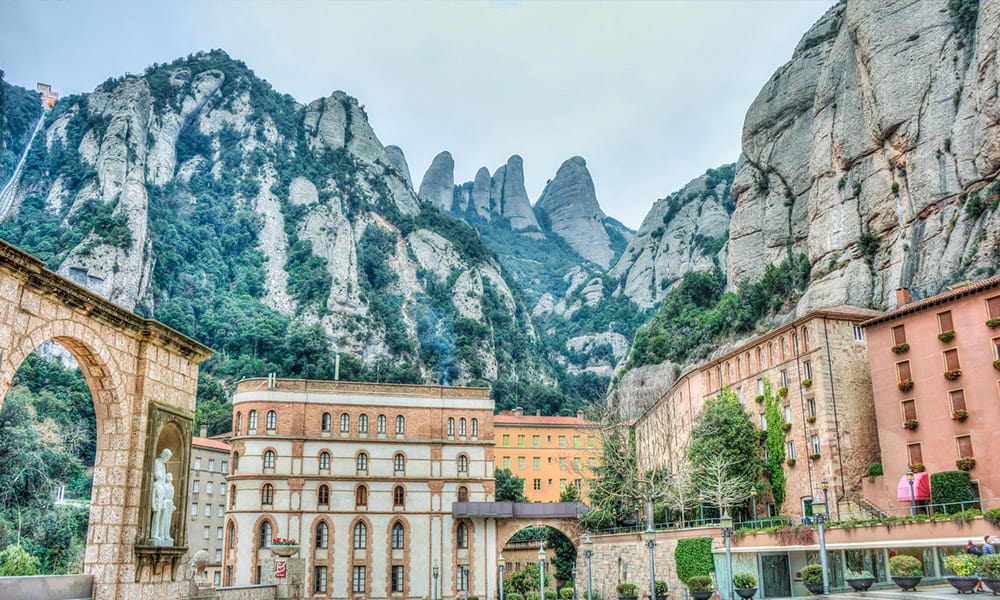
THE MONTSERRAT MOUNTAIN RANGE
The amazing rounded and elongated forms of the mountain’s walls are the result of the tectonic and isostatic movements that have taken place in the area for millennia that, in combination with atmospheric agents, helped the hard conglomerates in its surroundings to create these fascinating shapes that we can admire today. Its highest point is Sant Jeroni, which has spectacular views 1,236 meters high and promises views that go from the Pyrenees to the Sierra de Tramuntana in Mallorca (during the clearest days).
Surrounded by Mediterranean forest, oaks dominate in this wild and captivating landscape in which Count Guifré el Pilós built the first hermitage in 888, after which, according to legend, two children found the image of the Virgin of Santa María de Montserrat in the Santa Cueva. In this way, the mountain range has been linked to mysticism and Catholic spirituality for centuries, which is why thousands of worshipers visit this curious place every year.
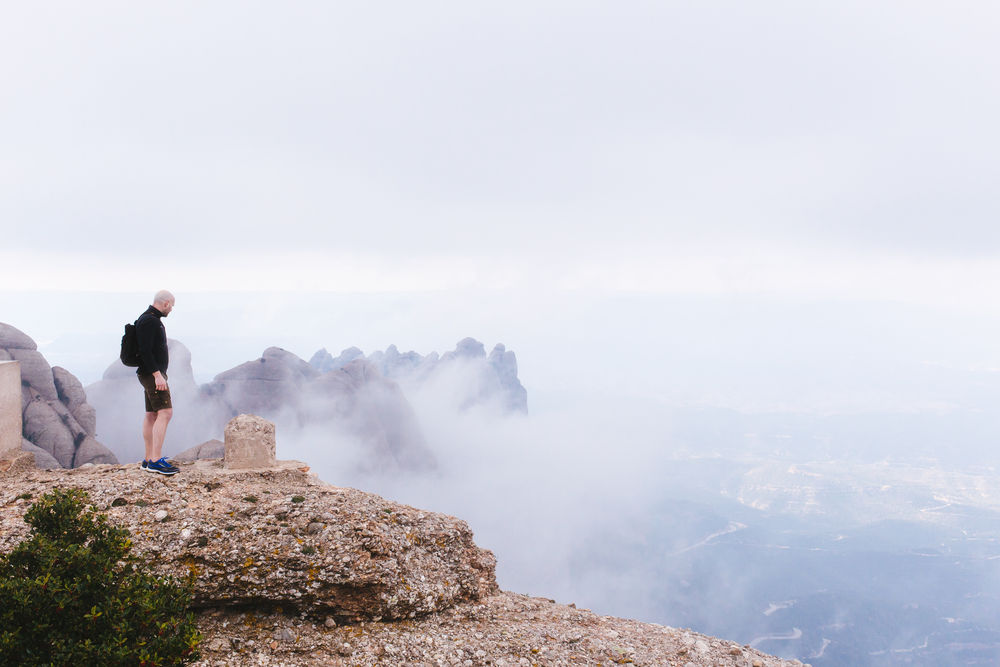
PLACES TO VISIT IN MONTSERRAT
After learning a little more about the Montserrat mountain range, you will surely have noticed that the monastery of Montserrat has a lot to offer besides the abbey itself, which is why we want to explain everything you can see and visit.
1. Montserrat monastery
Although the first monastery was founded by Oliba, the abbot of Ripoll, in 1025; the truth is that the building that is currently the Monastery of Santa María de Montserrat was rebuilt by the Catalan architect Puig i Cadafalch in the 19th century, since most of the previous building was destroyed by a fire in 1808. Entering the square of Santa María, where you can see remains of the old Gothic cloister, we find the Basilica of Montserrat, which consists of a single nave built in the sixteenth century, and which is the only part of the monastery that survived the fire. In the basilica you will find the best-known element of Montserrat: La Moreneta. It is a figure carved in wood of the Virgin Mary and baby Jesus, with the peculiarity that her skin is completely black (hence her nickname of La Moreneta or ‘the dark one’). Many of the parishioners who visit the monastery queue to ask for miracles to the statue, which is the patron saint of Catalonia, carved in Romanesque style during the twelfth century. If you want to listen to the choir of the Escolania de Montserrat, considered the oldest singing school in Europe, you can check its singing hours for the salve and virolai or vespers on their website.
The monastery also gives you the chance of discovering two private parts of it: The New Sacristy and the Escolania building. During the visit, you will be able to learn about the monks, choir boys and other workers’ day to day, as well as admire the artistic value of their facilities.
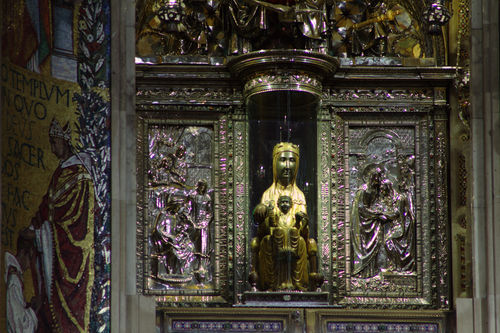
2. Santa Cova:
The place where the image of the virgin of Montserrat appeared for the first time is barely one kilometer away from the Monastery and can be accessed by a path excavated in the mountain in which you will find the Monumental Rosary of Montserrat.
Inside the chapel of Santa Cova, built in the nineteenth century, we find a beautiful building that shows the integration of architecture with its natural environment, as you will be able to see how the chapel perfectly blends with the grotto in which it was built.
3. Monumental Rosary of Montserrat
If you are looking for works by Gaudí in Barcelona or its surroundings, on the path that goes to the Santa Cova you will find one that not many know: the monument built in honour of the first Mystery of Glory. Other architects and outstanding sculptors of Catalan modernism who participated in this architectonic group were Puig i Cadafalch, the sculptor Josep Llimona or Joaquim Condina i Matalí.
4. Montserrat Museum
Beneath the Montserrat monastery square you will find this building that was first conceived as a Biblical museum. Over the years, this has become a space that houses a large number of pieces of art from all periods, thanks to private donations. Among the most outstanding works you will find are some paintings by great artists such as Caravaggio, Marià Fortuny, Claude, Monet, El Greco, Picasso, Degas or Santiago Rusiñol.
5. Viacrucis path
After the Abat Oliba square, right next to the Chapel of the Dolorosa, another section of monumental statues begins, although on this occasion they represent scenes from the life of Jesus Christ. The visit is worth it for the beautiful views of the sanctuary.
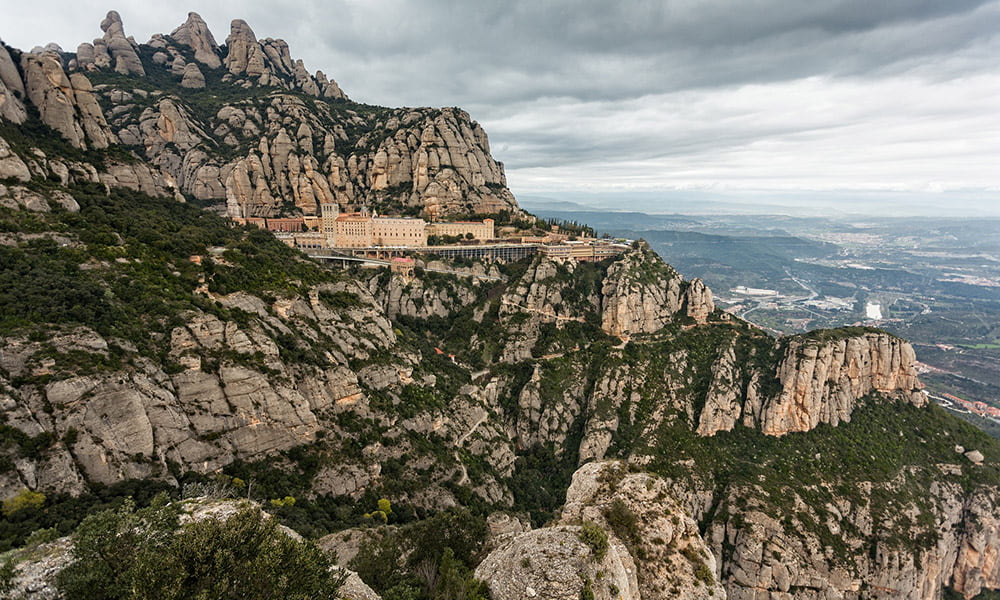
6. Sant Joan, Sant Onofre and Santa Magdalena hermitages
If you want to go hiking in Montserrat and get to know its surroundings, the Monastery proposes a tour of the Tebes region to visit the remains of the hermitages of Sant Joan, Sant Onofre and Santa Magdalena. You can book a guided tour through the monastery website, or take the tour on your own, it’s about three hours on foot. We can assure you, this is one of the best hiking routes in Barcelona.
7. Santa Cecilia de Montserrat
This Romanesque hermitage with views of the Llobregat valley is catalogued as Architectural Heritage of Catalonia and is located a few kilometres from the municipality of Monistrol de Montserrat. In addition, here you will also find the Sean Scully art space, which is linked to the Montserrat museum. Visiting this church can be a good complement if you plan to spend the entire day in the area.
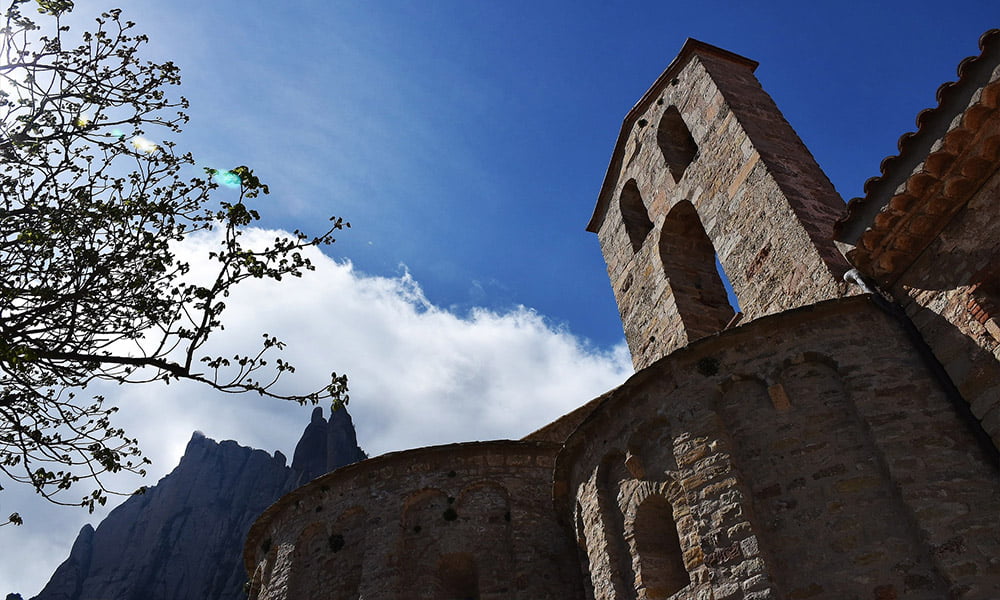
HOW TO GET TO MONTSERRAT
From our beach apartments in Barcelona, there are several ways to get to Montserrat:
• By train: Get off at the Plaça d’Espanya stop (L3 or L1) and take the R5 Manresa line, which leaves every hour. You must get off at the Monistrol de Montserrat stop if you want to get on the Funicular train (which is taken at the same station), or at the Montserrat-Aeri stop if you want to go up by cable car.
• Car. You can get to Montserrat by car by leaving Barcelona and taking the A-2 towards Lleida. In the precinct of the sanctuary there is a paid parking area, although the capacity is limited. Another option is to park the car next to the Monistrol station and get on with the train.
• Bus. Several private companies offer organized trips to Montserrat. In addition, there is a bus company that gives the option to leave Calle Viriato (near Sants station) and return in the afternoon.
Funicular, cable car or on foot?
Once you have reached the foot of the mountain of Montserrat, what is the best way to reach the Monastery? If you are a hiker, there are numerous routes that take you to the abbey, leaving from Monistrol or Collbató. Among them, El Camino de Les Canales and L’Aigua, the shortcut of Els Tres Quarts, the PR-C19, the path named Coves del Salnitre or the path of Les Voltes and Sant Miquel.
If you are not fond of hiking, both the funicular and the cable car will transport you to the area of the Monastery quickly while enjoying views that will leave you breathless. The only difference is in the time it will take you to get there, since the cable car, known as Aeri, will take you to the top in only 5 minutes, while the other takes 15.
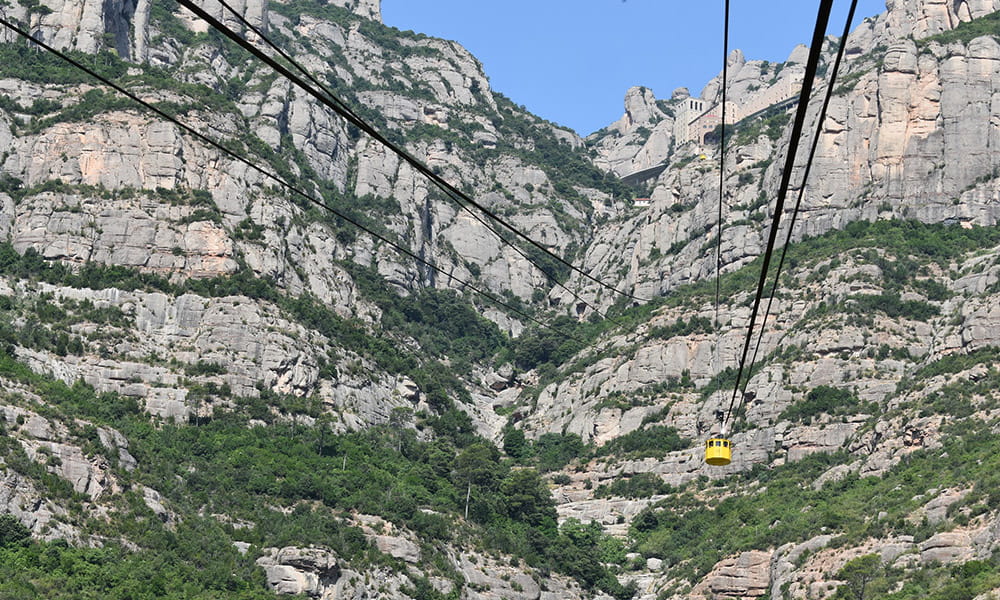
BEST TIME TO VISIT MONTSERRAT
Have you decided to visit Montserrat and want to plan your trip from Barcelona? Here are some timetables that will be useful:
• FGC train. The first train of the day of the R5 line Manresa leaves Plaça d’Espanya at 8:36 in the morning.
• Funicular. Timetables vary according to the season. The first uphill trains usually start between 8:35 and 8:48, while the last descents are between 6:15 and 8:48. Thus, it is better to consult the timetables of the day on which you want to go on the website of the rack train.
• Aeri de Montserrat. From 1 March to 31 October, the cable car is in operation from 9: 40h to 19: 00h. From November until February 28, from 10: 10h to 17: 45h.
• Montserrat Monastery opening hours. Every day from 7:30 a.m. to 8:00 p.m. You can visit the Virgin from 8:00 a.m. to 10:00 p.m. and from 12:00 p.m. to 6:15 p.m.
• Santa Cova opening hours. From April 1 to November 1 from 10:30 a.m. to 5:15 p.m and from November 2 to March 21 from 11:30 a.m. to 4:16 p.m.
• Montserrat Museum opening hours. The museum opens from 10:00 a.m. to 6:45 p.m., Monday through Friday and from 9:00 a.m. to 8:00 p.m. on weekends and holidays.
• Santa Cecilia de Montserrat opening hours. It only opens on weekends in July, September and every day in August. During these months, it opens from 10:00 a.m. to 2:00 p.m. and from 3:00 p.m. to 6:00 p.m. If you want to visit this venue outside normal opening hours, you can book an arranged visit for groups.
Note: Keep in mind the hours of sunshine for each season to visit Montserrat, since in winter, the sun sets much earlier. For this reason, this excursion is one of the best options if you do not know what to do in Barcelona in summer.

